Was tragically flirted for 20 years? The four major mistakes in the history of LCD TV development
With the development of television today, people’s pursuit of it has long been a simple matter. In the course of development of television, liquid crystal display products beat CRT with the advantages of picture quality and ultra-thin technology, and they continued to occupy the TV market for nearly 20 years. Since 2015, OLEDs and quantum dot display technology have entered the market strongly. With the many advantages of picture display, both are recognized as "candidates" for next-generation display technologies. After 20 years of LCD development, it is now coming to an end. Today we may wish to review some of the wrong interpretations in the history of LCD TVs to see how you have been cheated for 20 years.
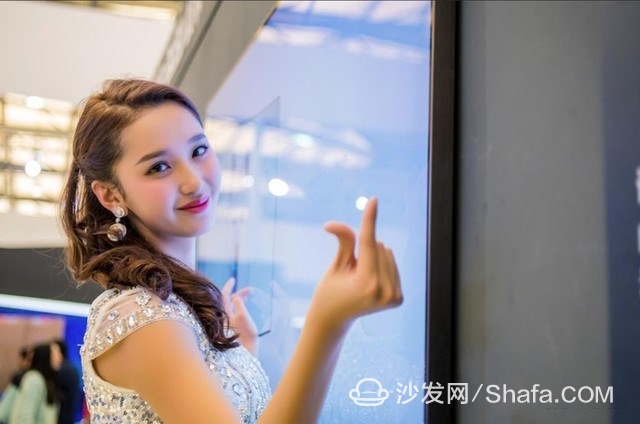
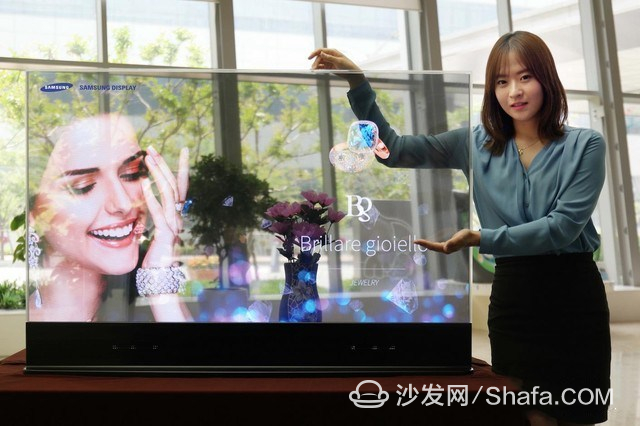

Missed one: LCD saves more power than CRT
When you see this topic, there may be readers who can't wait to jump out and hit the author's face. The above also said that LCD is relying on the advantages of power saving and so on to defeat CRT. How come out now that LCD is more power-efficient than CRT? Please do not worry, the following author will give you a satisfactory reason.

Because the LCD display structure in the early years was simple and small in size, the required number of backlight lights was less, so the same-size LCD display is indeed more energy-efficient than the CRT TV. In the same period, LCD TVs are larger in size and require more interface configurations. Therefore, the configuration on the circuit board is more complicated. At the same time, the number of LCD TVs with backlight lamps with a larger size needs more. Therefore, LCD TVs at that time And can not save more power.

Myth 2: The dynamic contrast that exaggerates to unbelieving
Digital games are what TV makers like to play with consumers. We know that LCD TVs have many parameters and panel properties, brightness, contrast, color gamut, viewing angles, etc. Consumers can judge the quality of a TV through a series of parameters. However, the emergence of a parameter called "dynamic contrast" has made LCD TV makers crazy and used the phrase "How bold are people and how productive are they?" to describe the madness of manufacturers.
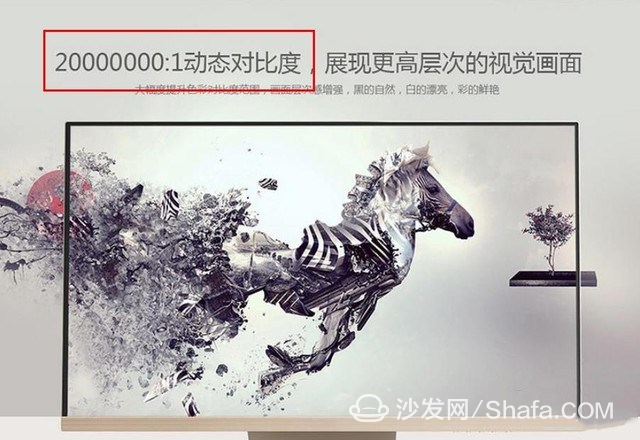

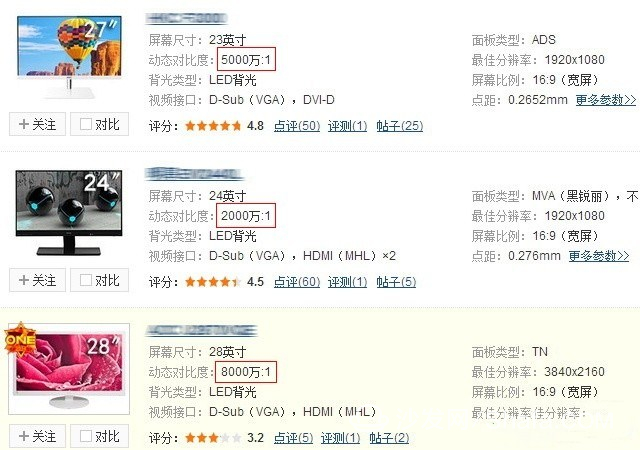
Fallacy 3: LED backlight quality is better than traditional CCFL
In the display field, there must be many instability or defects at the beginning of any new technology. It needs to be perfected by the joint efforts of the manufacturers. This process often takes years or even longer. When LCD TVs with LED backlights first appeared, they were very expensive, and television manufacturers claimed that LED had better picture quality than CCFL backlight products and that they used LED backlight technology at the beginning. day.
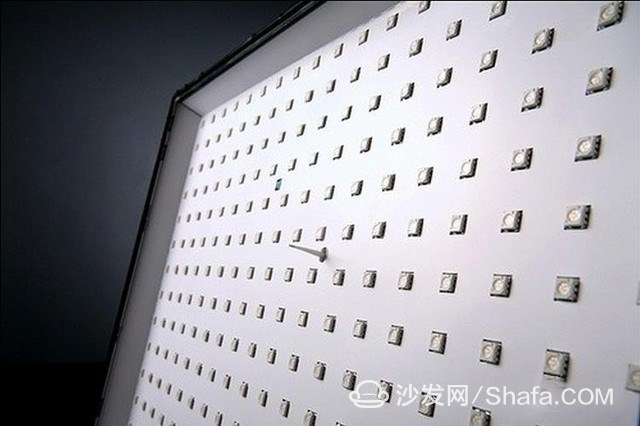
In fact, LED backlight is divided into white LED backlight source and RGB tricolor backlight source. The color gamut is higher and the color is more vivid. This is true, but the LED backlight mentioned here refers to the RGB three-color backlight source, and the RGB light source. The cost is higher, and the product has a large volume and high heat, so most TV manufacturers use white LED backlight sources. In addition, when the CCFL backlight developed to the extreme, the performance in color control and stability was by no means inferior to that of the initial LCD backlight.

Fallacy 4: 4K is really Ultra HD?
In the television market, all manufacturers are not writing articles at all times. This is because our desire for display product clarity is endless. In today's TV market, the penetration rate of large-size 4K TV products has reached more than 80%. Indeed, from 1080P to 2K to 4K, the exquisite degree of the TV picture is getting higher and higher. However, 4K currently being promoted by manufacturers as ultra-high definition is actually only one of the lowest standards of Ultra HD, and 8K is truly king.


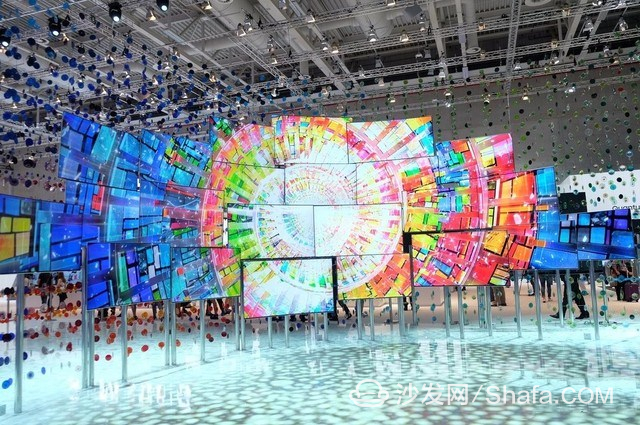
In this article, the author mentions several major delays in the history of LCD TVs. The purpose of the author is to exaggerate many misunderstandings. The purpose of the author is to inform everyone that before choosing TV products, some of the technical terms are used to do some homework. You can see clearly and treat it rationally. Remember not to blindly listen to and follow suit, and choose according to their actual needs in order to use the least amount of money possible to buy the most suitable TV product.
Smart TV/box information can focus on smart TV information network sofa butler (http://), China's influential TV box and smart TV website, providing information, communication, TV boxes, smart TVs, smart TV software, etc. Answering questions.
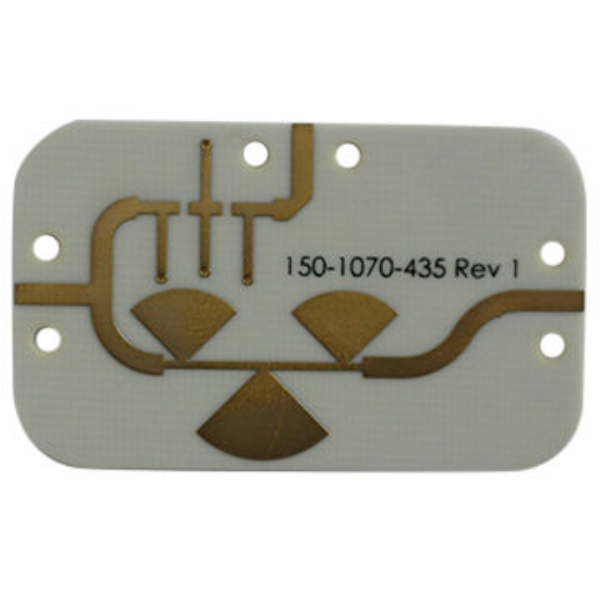 Detailed analysis of high-frequency board parameters:
Detailed analysis of high-frequency board parameters:
1. The thermal expansion coefficient of the high-frequency circuit board base material and copper foil must be the same. If they are inconsistent, it will cause the copper foil to separate during the hot and cold changes.
2. The high-frequency circuit board substrate should have low water absorption, and high water absorption will cause dielectric constant and dielectric loss when wet.
3. The dielectric constant (Dk) of the high-frequency circuit board substrate must be small and stable. Generally speaking, the smaller the better. The signal transmission rate is inversely proportional to the square root of the material's dielectric constant. High dielectric constant is likely to cause signals Transmission delays.
 4. The dielectric loss (Df) of the high-frequency circuit board substrate material must be small, which mainly affects the quality of signal transmission. The smaller the dielectric loss, the smaller the signal loss.
4. The dielectric loss (Df) of the high-frequency circuit board substrate material must be small, which mainly affects the quality of signal transmission. The smaller the dielectric loss, the smaller the signal loss.
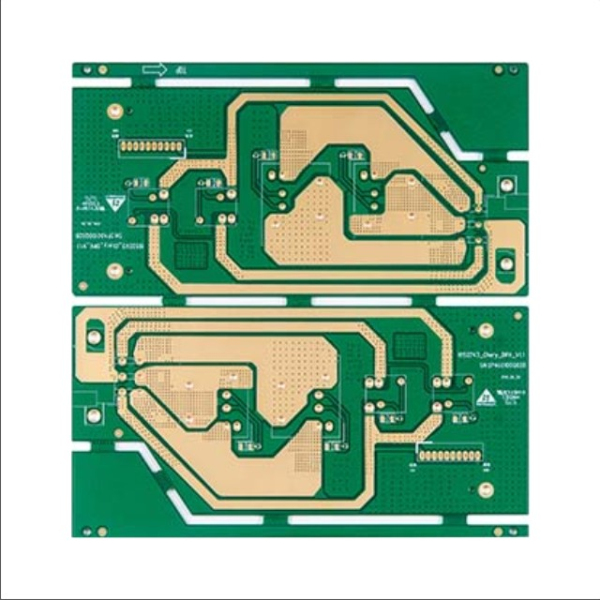 5. The heat resistance, chemical resistance, impact strength, and peel strength of the high-frequency circuit board substrate material must also be good. At present, the most commonly used High frequency board substrate is a fluorocarbon dielectric substrate, such as polytetrafluoroethylene (PTFE), which is usually called Teflon, and is usually used above 5GHz. In addition, FR-4 or PPO substrates are also used, which can be used for products between 1GHz and 10GHz.
5. The heat resistance, chemical resistance, impact strength, and peel strength of the high-frequency circuit board substrate material must also be good. At present, the most commonly used High frequency board substrate is a fluorocarbon dielectric substrate, such as polytetrafluoroethylene (PTFE), which is usually called Teflon, and is usually used above 5GHz. In addition, FR-4 or PPO substrates are also used, which can be used for products between 1GHz and 10GHz.

The four major mistakes in the history of LCD TV development
First of all, let's briefly review the history of LCD TVs. As early as the early 70s of the last century, Sharp, the father of LCDs, made the world’s first liquid crystal display device, but due to the monochrome display, it was difficult to popularize it on television, despite the appearance of super-twisted nematic liquid crystal displays in the 1980s. Thin film transistor liquid crystal display technology was developed, but the liquid crystal technology is still immature and difficult to popularize. Until the end of the 1980s, Japan had mastered the production technology of STN-LCD and TFT-LCD. LCD TVs began to develop at a high speed, and it has dominated the television industry for nearly 20 years. 
More new display technologies begin to enter our sight
Since the LCD TVs were launched, they have completely defeated the CRT in five years or so due to their advantages of slim size and large size. However, it is undeniable that LCD technology still has irreversible defects. , And some manufacturers use irresponsible exaggerated propaganda in order to transfer the sight of consumers, for example, LCD is more power-efficient than CRT, LED backlight quality due to traditional CCFL backlight quality. 
Sony has aggressively launched OLED TVs this year
2017 was a year in which the television market broke out. New technologies such as 4K, 8K, HDR, quantum dots, OLED, and AR were added to the products by TV manufacturers. In this chapter, the author intends to allow consumers to soberly and rationally view various new display technologies through the interpretation of some delays in the development of LCD TVs. Next, let's return the time to the past and see how we have been stunned for 20 years. Missed one: LCD saves more power than CRT
When you see this topic, there may be readers who can't wait to jump out and hit the author's face. The above also said that LCD is relying on the advantages of power saving and so on to defeat CRT. How come out now that LCD is more power-efficient than CRT? Please do not worry, the following author will give you a satisfactory reason.

Early LCD monitors did a better job than the same size CRT TVs due to their simple construction.
First of all, this proposition is for the early development of LCD TVs. In the early days of liquid crystal display, most of the products were LCD TVs and LCDs. LCDs were actually more power-efficient than CRT TVs of the same size, but LCD TVs did not have any advantages over CRT TVs of the same size. Charge electricity. Why is this? Because the LCD display structure in the early years was simple and small in size, the required number of backlight lights was less, so the same-size LCD display is indeed more energy-efficient than the CRT TV. In the same period, LCD TVs are larger in size and require more interface configurations. Therefore, the configuration on the circuit board is more complicated. At the same time, the number of LCD TVs with backlight lamps with a larger size needs more. Therefore, LCD TVs at that time And can not save more power.

The CRT's most advanced period of power consumption is not too high
Just as today's LCD TVs have reached an extreme stage, the CRTs of that year are in the most technologically advanced era. The CRT TVs in the later years can be said to have reached the extreme in terms of quality, size and power consumption. Compared with the large and heavy LCD TVs in the early years, its power consumption performance is not better than that of CRT TVs, and even more power is consumed. Until the advent of LED backlights, the power consumption of LCD TVs has greatly improved. Myth 2: The dynamic contrast that exaggerates to unbelieving
Digital games are what TV makers like to play with consumers. We know that LCD TVs have many parameters and panel properties, brightness, contrast, color gamut, viewing angles, etc. Consumers can judge the quality of a TV through a series of parameters. However, the emergence of a parameter called "dynamic contrast" has made LCD TV makers crazy and used the phrase "How bold are people and how productive are they?" to describe the madness of manufacturers.

Dynamic contrast is nothing more than a digital game played by manufacturers and it has no practical significance
Dynamic contrast refers to the contrast value measured by a liquid crystal television under certain specific conditions. For example, attention is paid to each trend of the test screen, and the contrast value of the maximum contrast area is used as the contrast parameter of the television product. Different manufacturers may have different methods for measuring dynamic contrast, but the nature of this data is invariably divergent. Dynamic contrast and true contrast are two completely different concepts. 
The true contrast is the ratio of the white brightness of a television to the brightness of black.
The true contrast is the ratio of white brightness to black brightness of a television. The higher the contrast parameter, the more intense the layered and visual perception the user obtains. This value is very valuable, but At that time, some manufacturers suddenly took out the concept of "dynamic contrast". In a short period of time, from 1000:1 to 5000:1 to 10,000:1, in 2009 a vendor launched the world's first 10 million: A dynamic contrast liquid crystal display product, starting with the dynamic contrast war. Then there were even 100 million: 1 such exaggerated data. 
Until later, consumers began to sniff at these exaggerated data.
Things are going to be counterproductive. Until later, waking consumers realized that dynamic contrast is nothing more than a digital game played by vendors. It has no practical significance. The vendors also realized that the seriousness of the problem began to close. Although dynamic contrast is still used today, it is no longer a selling point for vendors. It gradually fades out of sight. Fallacy 3: LED backlight quality is better than traditional CCFL
In the display field, there must be many instability or defects at the beginning of any new technology. It needs to be perfected by the joint efforts of the manufacturers. This process often takes years or even longer. When LCD TVs with LED backlights first appeared, they were very expensive, and television manufacturers claimed that LED had better picture quality than CCFL backlight products and that they used LED backlight technology at the beginning. day.

Most TV manufacturers use white LED backlight
In the early days of the rise of LED backlight TVs, TV manufacturers often declared the term: This TV is equipped with LED backlight screen, wider than the CCFL color gamut, longer life, more power, more environmentally friendly, so the price Slightly higher, but definitely worth the money. Heard this, so many tempting advantages, consumers will certainly choose to spend more to buy expensive LED-backlit TV. In fact, LED backlight is divided into white LED backlight source and RGB tricolor backlight source. The color gamut is higher and the color is more vivid. This is true, but the LED backlight mentioned here refers to the RGB three-color backlight source, and the RGB light source. The cost is higher, and the product has a large volume and high heat, so most TV manufacturers use white LED backlight sources. In addition, when the CCFL backlight developed to the extreme, the performance in color control and stability was by no means inferior to that of the initial LCD backlight.

EIZO sticks to CCFL after years of LED backlighting
As an example, as one of the most professional display brands in the world, EIZO's LCD monitors were all CCFL backlights. Even after years of LED backlighting, EIZO still adheres to CCFL. At that time, EAZO headquarters executives had publicly stated that CCFL was insisted because LED technology was not mature enough and the color control was not high. Only CCFL could achieve professional-level display. The insistence on the facts has enabled Yi-Zhao to face a large number of manufacturers. In the fifth year of LED emergence, Yi-Zhao finally fully immersed himself in the use of LED backlights. Fallacy 4: 4K is really Ultra HD?
In the television market, all manufacturers are not writing articles at all times. This is because our desire for display product clarity is endless. In today's TV market, the penetration rate of large-size 4K TV products has reached more than 80%. Indeed, from 1080P to 2K to 4K, the exquisite degree of the TV picture is getting higher and higher. However, 4K currently being promoted by manufacturers as ultra-high definition is actually only one of the lowest standards of Ultra HD, and 8K is truly king.

4K has a resolution of 3840×2160
720P, 1080P is called high definition, 2K is called super clear, but 4K can not safely take over the title of "ultra-high definition". Even in the industry, there is no strict specification for 4K resolution. In addition to the resolution of 3840×2160, other indicators still use the existing Full HD (1080p) standard. The Super Hi-Vision standard approved by the International Telecommunication Union (ITU) and the Society of Motion Picture and Television Engineers (SMPTE) has detailed new indicators. The picture frame rate, the standard viewing distance, the viewing angle mode, and the audio standard have all greatly improved. 
8K is the real king of Ultra HD
The 8K resolution reaches a pixel size of 7680×4320, which is 7680 effective pixels in the horizontal direction, 4320 effective pixels in the vertical direction, and 4K is only one quarter of the 8K resolution. This shows that 8K can bring the ultimate picture quality experience, the screen is unmatched. As early as 2012, the UN's International Telecommunication Union (ITU) adopted the 7680x4320 resolution recommended by NHK Japan as the international 8K Super Hi-Vision (SHV) standard. It can be seen that 4K may only pave the way for 8K, and the more frequent pixel war in the future may be about to begin. 
In today's era of display technology, consumers also want to polish their eyes.
Written at the end: In this article, the author mentions several major delays in the history of LCD TVs. The purpose of the author is to exaggerate many misunderstandings. The purpose of the author is to inform everyone that before choosing TV products, some of the technical terms are used to do some homework. You can see clearly and treat it rationally. Remember not to blindly listen to and follow suit, and choose according to their actual needs in order to use the least amount of money possible to buy the most suitable TV product.
Smart TV/box information can focus on smart TV information network sofa butler (http://), China's influential TV box and smart TV website, providing information, communication, TV boxes, smart TVs, smart TV software, etc. Answering questions.
What is a PCB High Frequency Board?
What is a PCB high frequency board? Special circuit boards with higher electromagnetic frequencies. Generally speaking, High frequency board can be defined as a printed circuit board with a frequency above 1GHz. Its various physical properties, precision, and technical parameters require very high requirements, and are often used in communication systems, automobile anti-collision systems, satellite systems, radio systems and other fields.

1. The thermal expansion coefficient of the high-frequency circuit board base material and copper foil must be the same. If they are inconsistent, it will cause the copper foil to separate during the hot and cold changes.
2. The high-frequency circuit board substrate should have low water absorption, and high water absorption will cause dielectric constant and dielectric loss when wet.
3. The dielectric constant (Dk) of the high-frequency circuit board substrate must be small and stable. Generally speaking, the smaller the better. The signal transmission rate is inversely proportional to the square root of the material's dielectric constant. High dielectric constant is likely to cause signals Transmission delays.


high frequency pcb,high frequency pcb laminate,high frequency pcb board,rogers high frequency pcb,pcb for high frequency
HAODA ELECTRONIC CO.,LIMITED , https://www.pcbhdi.com